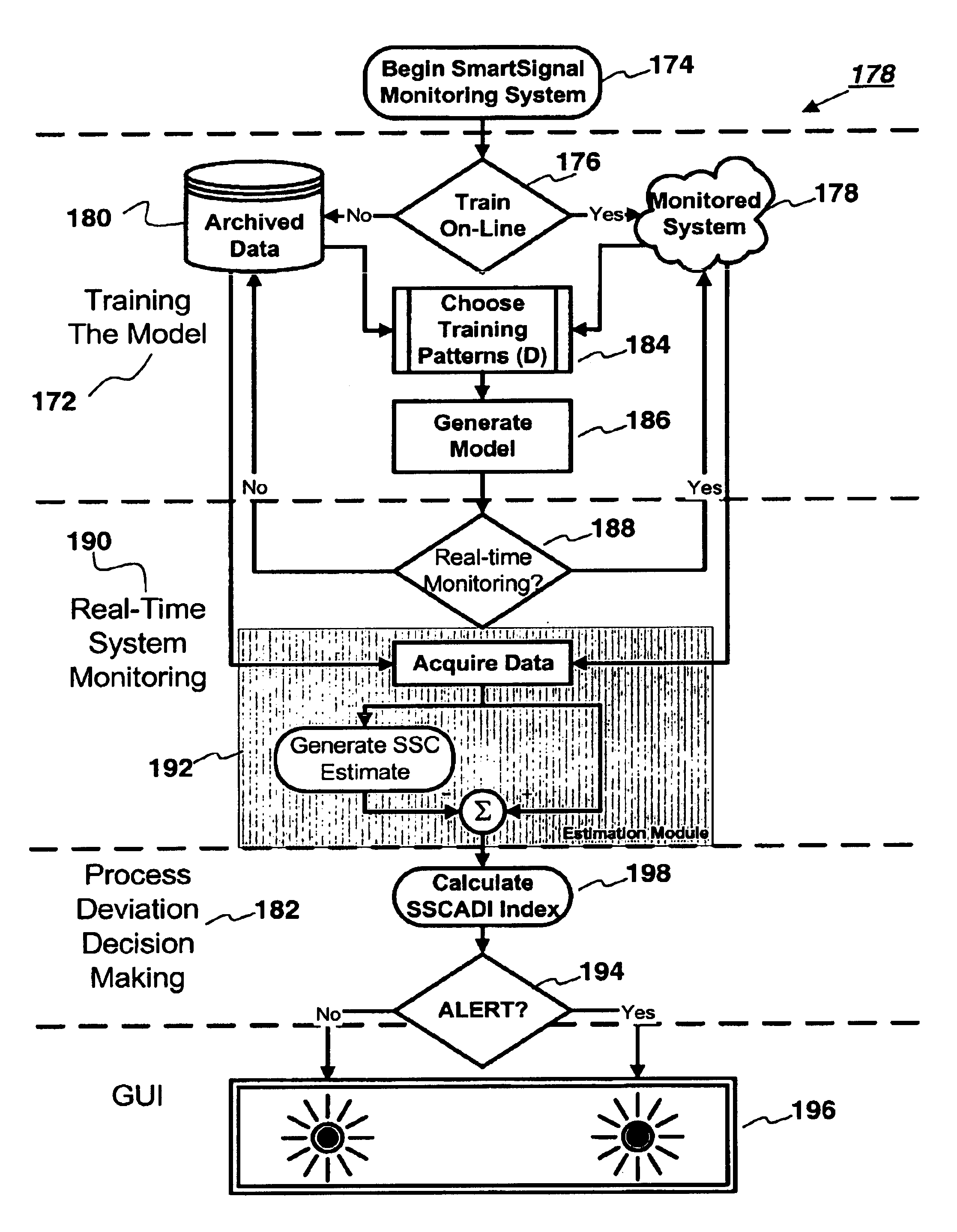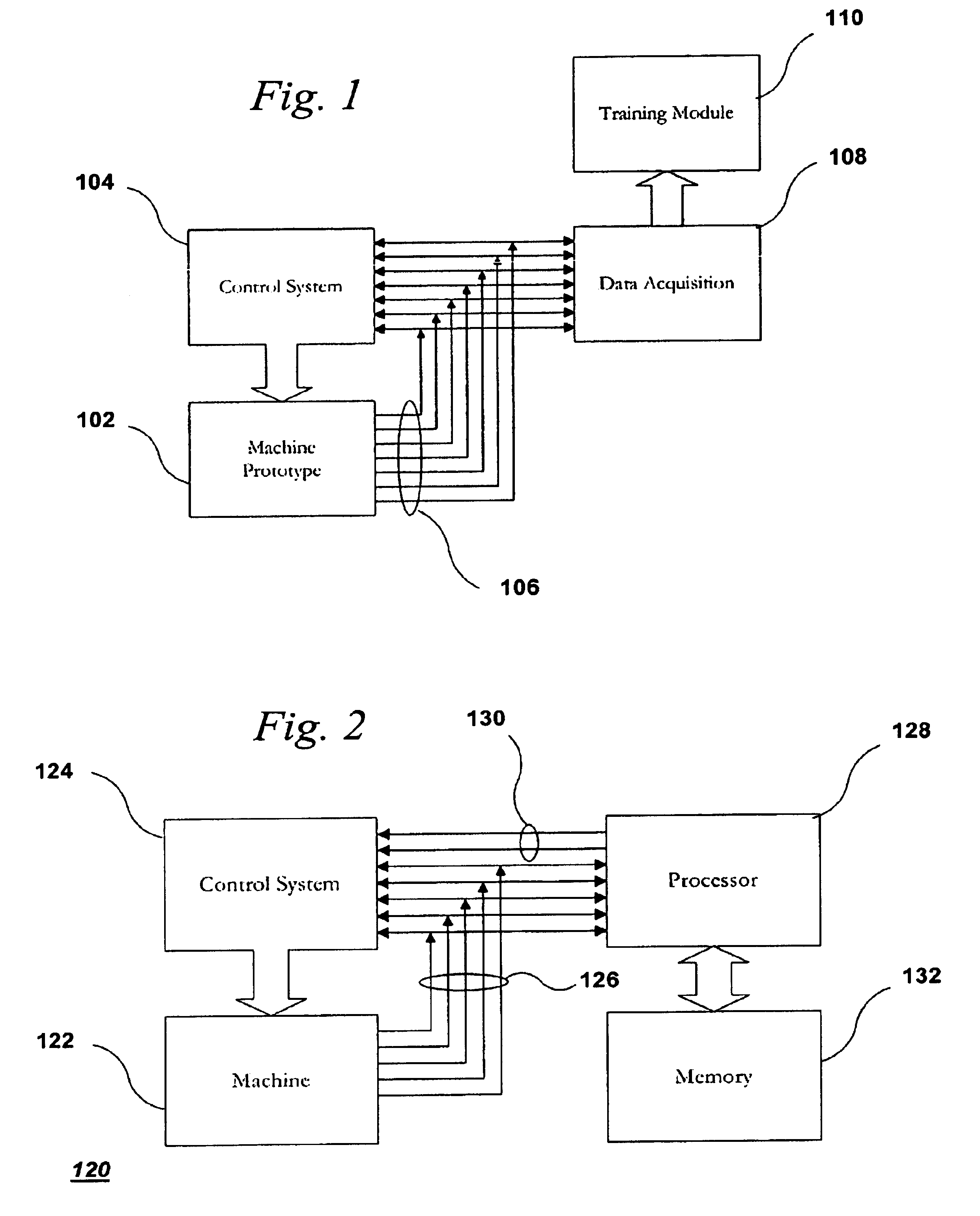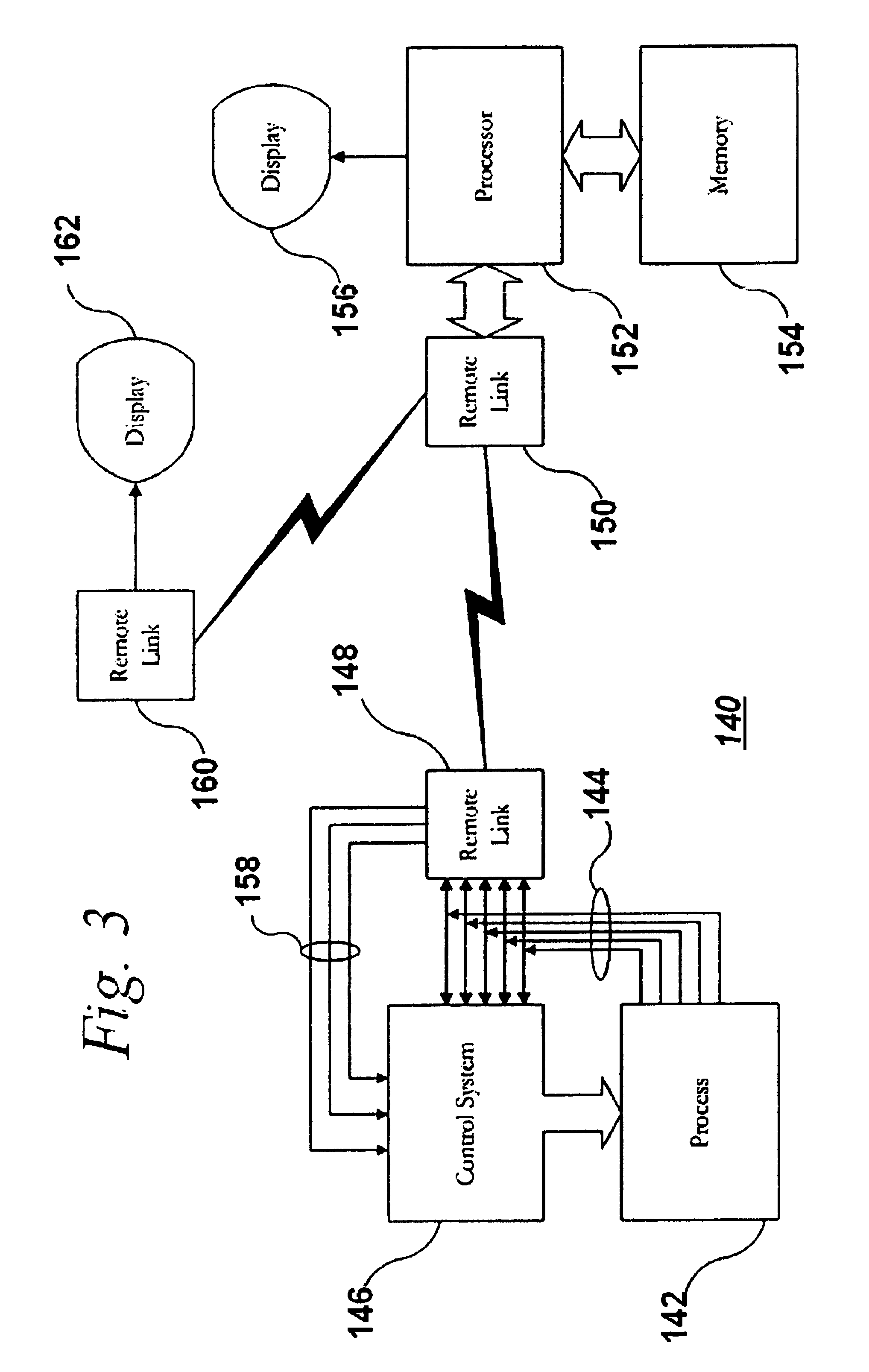Signal differentiation system using improved non-linear operator
a signal differentiation and non-linear operator technology, applied in adaptive control, instruments, nuclear elements, etc., can solve the problems of slow system sampling rate and negligible internet message delivery time in comparison, and achieve negligible internet message delivery time and accurate signal differentiation determination
- Summary
- Abstract
- Description
- Claims
- Application Information
AI Technical Summary
Benefits of technology
Problems solved by technology
Method used
Image
Examples
Embodiment Construction
[0021]The present invention is a system, method and program product for monitoring operation of a machine, process, living system or any other such system to accurately predict individual component failures, i.e. component end of life, such that failure or process upset can be anticipated to reduce planned downtime, reduce unplanned downtime and provide for process or product quality optimization.
[0022]It is directed to the employment of an improved similarity operator within an empirical modeling engine for use in generating estimates of sensor values for a monitored process or machine based on input of the actual sensor values. Advantageously, the similarity operation carried out in the modeling according to the invention has comparatively low computational needs as compared to other similarity operators that can be used in such an empirical model-based monitoring system, such as is described in U.S. Pat. No. 5,987,399 to Wegerich et al., wherein is disclosed a similarity operator...
PUM
 Login to View More
Login to View More Abstract
Description
Claims
Application Information
 Login to View More
Login to View More - R&D
- Intellectual Property
- Life Sciences
- Materials
- Tech Scout
- Unparalleled Data Quality
- Higher Quality Content
- 60% Fewer Hallucinations
Browse by: Latest US Patents, China's latest patents, Technical Efficacy Thesaurus, Application Domain, Technology Topic, Popular Technical Reports.
© 2025 PatSnap. All rights reserved.Legal|Privacy policy|Modern Slavery Act Transparency Statement|Sitemap|About US| Contact US: help@patsnap.com



